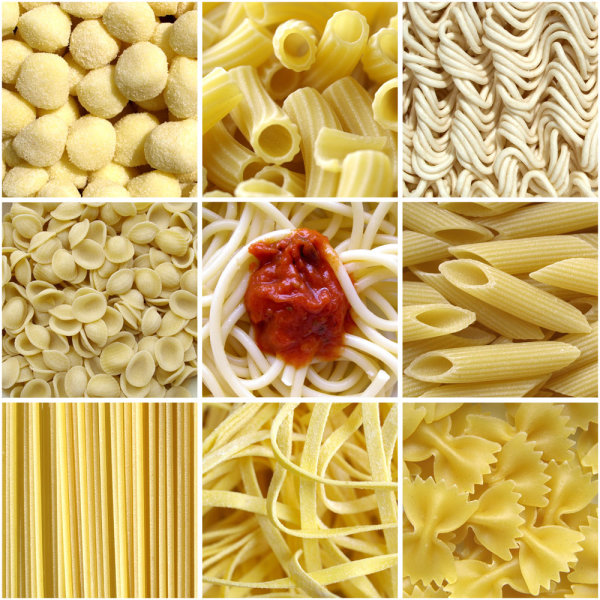The noodle is a simple creation, yet its complexity lies in its variations as a staple food around the world. The food has a long and rich cultural history, and it is essential to the diets of several cultures around the world, such as the Chinese and the Italians. Within these cultures, they each have their own interpretation of the noodle, and consequently, this results in regional variations of the simple noodle. Throughout time, the noodle and its dishes have expanded and adapted not only to its location but also its definition by culture and region.
Geography and technique are the main factors that influence the noodle and dishes of the particular region. The location of a culture results in different preferences for noodles. One notable difference is the noodles of northern China compared to those of southern China. Northern China has a colder climate suitable for growing wheat whereas southern China has a warmer climate favorable for growing rice. As a result, wheat noodles predominate the north while rice noodles are more common in the south. Noodles become even more varied based on the region and the techniques used to make them. According to “Noodles, traditionally and today” from Journal of Ethnic Foods, there are thousands of types of noodles based on its shape and preparation technique. Some varieties include hand-pulled noodles and bamboo-pressed noodles mentioned in “Noodles, Pressed and Pulled” from Slippery Noodles. Bamboo pressing results in the firm texture reminiscent to Italian al dente pasta compared to that of hand-pulled noodles. Similarly, there are thousands of varieties of pasta noodles in Italy depending on the region according to Let the Meatballs Rest with shapes such spaghetti, maccheroni, ravioli, and lasagna. One notable instance of this variation is present in the Italian region of Emilia-Romagna. According to Let the Meatballs Rest, the tortellini of Emilia are filled with meat because of its preference for pork while the cappelletti of Romagna are filled with cheese because of its preference for sheep products.
Along with the different noodle variations comes its different meanings for a culture. For the Italians, the shapes of the pasta represent different flavors from different experiences. Italian culture highly values family unity and experience, and the Italian nonna (grandmother) preparing her own interpretation of pasta for her family to enjoy is the perfect embodiment of this idea. According to Let the Meatballs Rest, “experience teaches us the different shapes of pasta” and “produce different effects on the taste buds.” Therefore, “[f]orm leads to different flavor.” The Chinese also have meanings associated with their noodles. For instance, the “crossing-the-bridge” noodles are named after the actions of a cook to ensure his patron’s son succeed in his imperial exams according to Noodle by Terry Durack. The story highlights the importance of education and family in Chinese culture, but most importantly, it emphasizes the love a cook puts into the noodles to create a dish for the son to enjoy and ultimately enjoy a successful life. Additionally, Thomas Talhelm’s Rice Theory states that the difference in agricultural methods to produce noodles between northern and southern China have led to cultural differences between the two regions. The north primarily grows wheat and produces wheat noodles while the south grows rice and produces rice noodles. Wheat is easier to grow, allowing for farmers to focus more on themselves, while rice requires more labor and cooperation. As a result, northerners are more individualistic and independent while southerners are more cooperative and dependent. Therefore, even different noodles in the same country can convey different cultural values.
The noodle is ultimately such an integral part of Chinese and Italian foods that it has become a part of the lives of these two countries. Today, it is considered as a staple of their diets. For instance, “Noodles, traditionally and today” classifies noodles as a cereal food, an essential part of the Chinese diet and “the main source of energy for the human body.” Italians also have a similar perspective on the noodle: the pasta noodle is a major part of the Mediterranean Diet with a high nutritional value according to The Truth About Pasta. Both cultures value the noodle as a reliable source of carbohydrates and protein. However, not only is the noodle important to physical health, but it is also important as a bonding tool for society. The noodles of both countries bring families together to eat and bond them with love of a dutiful cook or a loving nonna. They are the representation of cultural values such as family unity in Italy and a long, happy life in China. The noodle today ultimately brings health and happiness to billions of people around the globe.
Noodle n. a cultural artifact composed of a mixture of flour from a grain with water and sometimes eggs that can be shaped and cooked into the various shapes created by different cultures throughout its rich history.

Image: http://210.211.97.114:84/appimages/images/contents/n/o/noodle-pasta-psd-0.jpg
Sources:
- “Noodles, traditionally and today”
- “Crossing the bridge”
- “Noodles Pressed and Pulled”
- “The Truth About Pasta”
- Let the Meatballs Rest
